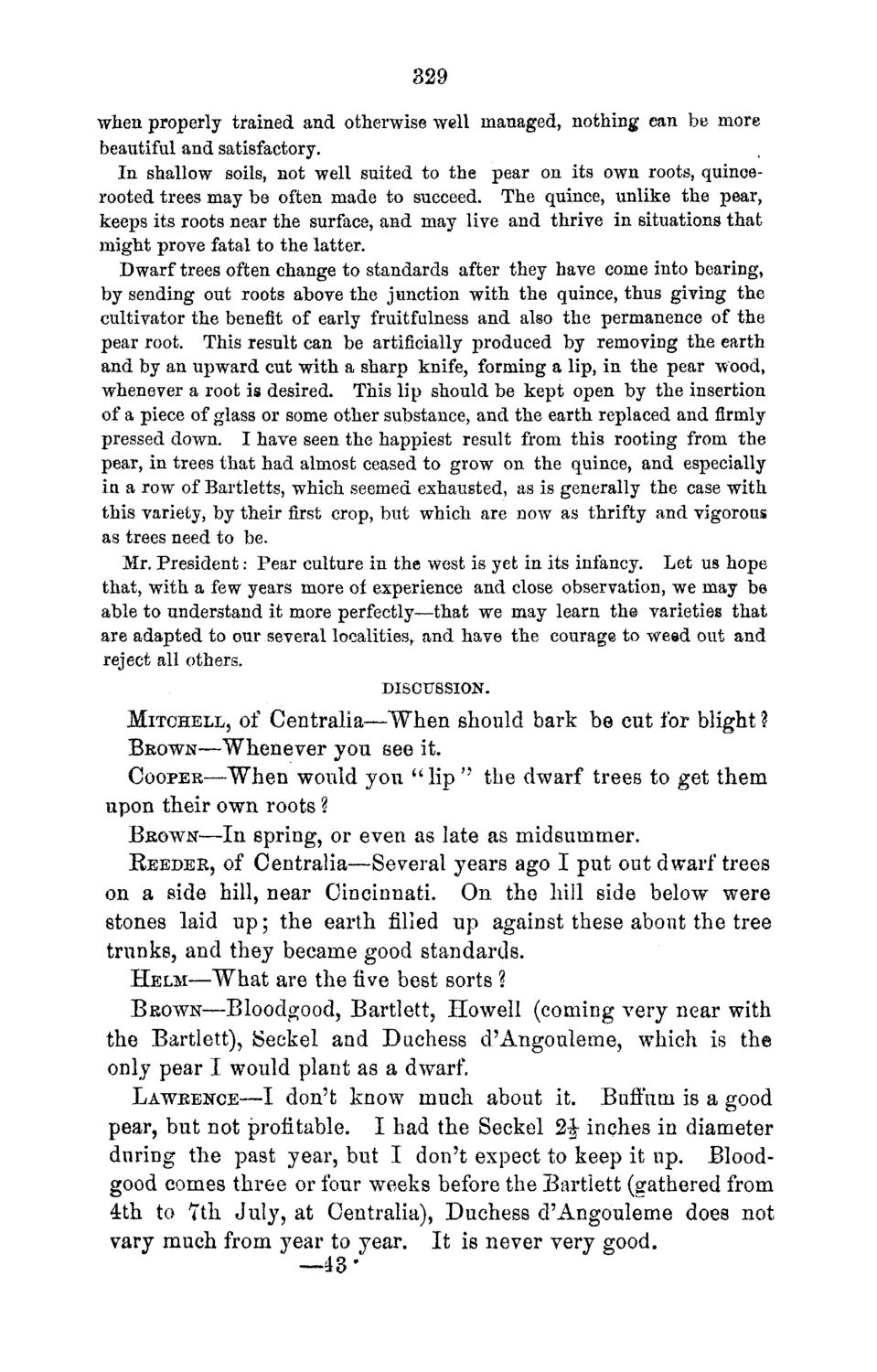| |
| |
Caption: Board of Trustees Minutes - 1870
This is a reduced-resolution page image for fast online browsing.

EXTRACTED TEXT FROM PAGE:
329 when properly trained and otherwise well managed, nothing ean be more beautiful and satisfactory. In shallow soils, not well suited to the pear on its own roots, quinoerooted trees may be often made to succeed. The quince, unlike the pear, keeps its roots near the surface, and may live and thrive in situations that might prove fatal to the latter. Dwarf trees often change to standards after they have come into bearing, by sending out roots above the junction with the quince, thus giving the cultivator the benefit of early fruitfulness and also the permanence of the pear root. This result can be artificially produced by removing the earth and by an upward cut with a sharp knife, forming a lip, in the pear wood, whenever a root is desired. This lip should be kept open by the insertion of a piece of glass or some other substance, and the earth replaced and firmly pressed down. I have seen the happiest result from this rooting from the pear, in trees that had almost ceased to grow on the quince, and especially in a row of Bartletts, which seemed exhausted, as is generally the case with this variety, by their first crop, but which are now as thrifty and vigorous as trees need to be. Mr. President: Pear culture in the west is yefc in its infancy. Let us hope that, with a few years more of experience and close observation, we may be able to understand it more perfectly—that we may learn the varieties that are adapted to our several localities,, and have the courage to weed out and reject all others. DISCUSSION. MITCHELL, of Centralia—"When should bark be cut for blight ? BROWN—Whenever you see it. COOPER—When would you " l i p " the dwarf trees to get them upon their own roots ? BROWN—In spring, or even as late as midsummer. REEDER, of Centralia—Several years ago I put out dwarf trees on a side hill, near Cincinnati. On the hill side below were stones laid u p ; the earth filled up against these about the tree trunks, and they became good standards. HELM—What are the five best sorts ? BROWN—Bloodgood, Bartlett, Howell (coming very near with the Bartlett), Seekel and Duchess d'Angouleme, which is the only pear I would plant as a dwarf. LAWRENCE-—I don't know much about it. Buffum is a good pear, but not profitable. I had the Seckel 2J inches in diameter during the past year, but I don't expect to keep it up. Bloodgood comes three or four weeks before the Bartlett (gathered from 4th to 7th July, at Centralia), Duchess d'Angouleme does not vary much from year to year. It is never very good. —43'
| |